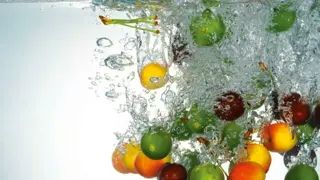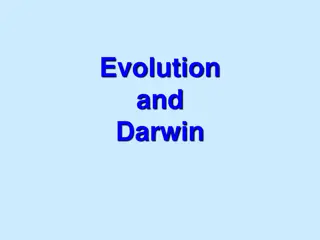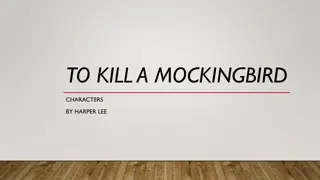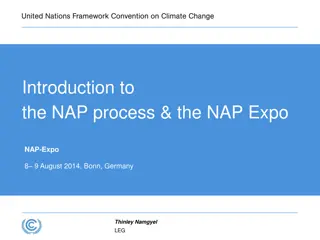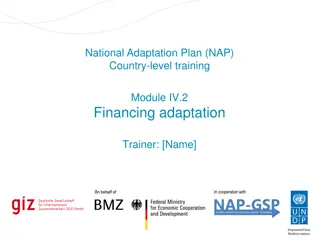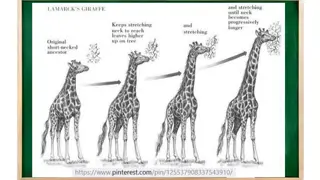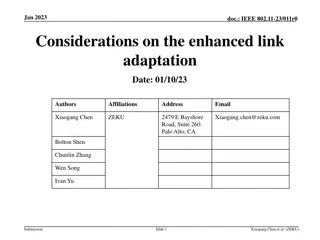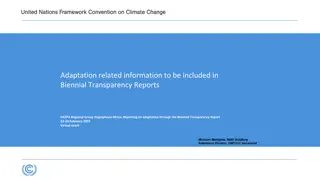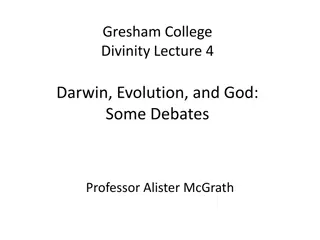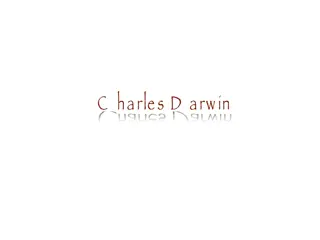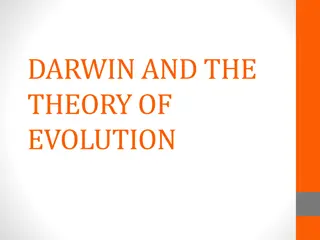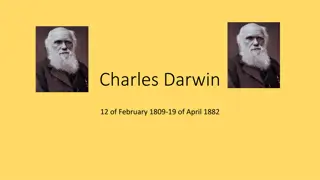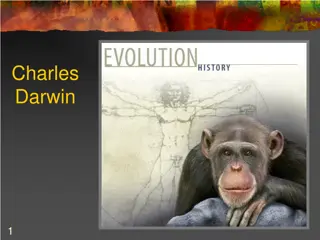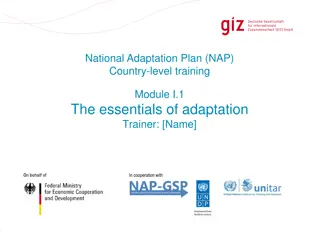Exploring Darwin's Theory of Adaptation Through Finch Beaks
Explore the concept of adaptation through Charles Darwin's observations of finches' beak variations on different Galapagos islands. Discover how finches have evolved to match the size of seeds they eat and how their beak shapes differ based on their food sources. Learn about the significance of species adaptation and environmental factors in shaping evolution.
Download Presentation

Please find below an Image/Link to download the presentation.
The content on the website is provided AS IS for your information and personal use only. It may not be sold, licensed, or shared on other websites without obtaining consent from the author. Download presentation by click this link. If you encounter any issues during the download, it is possible that the publisher has removed the file from their server.
E N D
Presentation Transcript
Species Species are organisms of the same type. For example, even though there are different breeds of dogs, they are all the same species. They show variation.
Charles Darwin In 1831 Darwin, set out as a ship s naturalist (what they used to call biologists) on HMS Beagle, it was a 5 year voyage to South America and the South Sea Islands.
Darwin recorded observations of plants and animals that he saw on the voyage. In the Galapagos islands Darwin observed that each of the islands had similar types of finches. Although they were the same species, each was different to make the most of local conditions.
Finches Finches are types of birds, many of them eat different types of seeds. They have adapted the size of their beaks to match the seeds they eat.
Darwins finches As you watch this video, notice all how different all of the finches look, and how they have different beaks to eat different foods. https://www.youtube.com/watch?v=l25MBq8T77w
There were 3 types of finches, each had a different beak. Each finch had a beak that was the right size and shape for the type of food on its island. Warbler finch Slender beak for catching small insects on the wing Woodpecker finch Strong beak to pick up a stick, which it pokes into trees to find insects Large ground finch Blunt beak for crushing seeds Finch 1. Finch 2. Finch 3.
Each island has different sized seeds Santa Cruz island - Mainly medium seeds Santiago Island - Mainly small seeds Isabela Island - Mainly large seeds
You can use different equipment to represent each beak size and see how easy it is to pick up the different sized seeds. Represented by rice, peas and pasta.
We will be moving small, medium and large seeds with the different beaks . The seeds could be represented by grains of rice, peas and pasta. From this, we will decide which island each finch lived on
Each island has different sized seeds Santa Cruz island - Mainly medium seeds Santiago Island - Mainly small seeds Isabela Island - Mainly large seeds
Which island does each finch live on? Island name Finch that lives there Finch 3 Isabela Santiago Finch 1 Santa Cruz Finch 2



